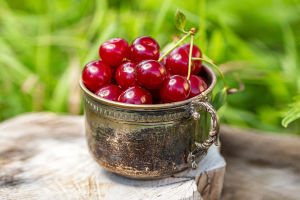Olive oil is everywhere—in kitchens, restaurants, and even skincare routines—but do we truly know why it’s so cherished? From salad dressings to cooking and finishing dishes, this golden liquid has been a cornerstone of Mediterranean life for centuries.
Today, we’re exploring olive oil’s history, varieties, extraction methods, and everyday uses so that we can better appreciate its role in our daily meals.
What Is Olive Oil?
Olive oil is a plant-based oil extracted from the fruit of the olive tree, scientifically named Olea europaea L.. Also called the “European olive” or “common olive,” it has been pressed for centuries to create a versatile product. Beyond cooking, it appears in cosmetics, traditional medicines, and even as lamp fuel in some areas. In Mediterranean countries, “oil” almost always means olive oil. Fun fact: the Spanish word for oil, aceite, comes from Arabic, and it literally means “olive juice.”
Origins and Varieties
There are hundreds of olive oil varieties, comparable to the range of flavors. Globally, billions of olive trees produce roughly 1.7 billion liters of oil every year. Experts recognize over 600 types of olive trees. But a tree’s variety is just one factor affecting the final product. Soil type, climate, harvest timing (usually November to February), and processing techniques all influence the oil’s color, aroma, and taste. Professional tasters describe oils as sweet, peppery, fruity, or mellow, ensuring every bottle reaches consumers with top quality.
Mediterranean Dominance
The Mediterranean climate suits olive trees perfectly, which is why about 95% of the world’s olive oil comes from this region. Traveling through Greece, Italy, Morocco, Portugal, Spain, or Tunisia, we can’t miss the hills covered in olive trees. These landscapes create a unique connection between land, climate, and fruit, producing oil with a flavor unmatched elsewhere. The region’s centuries-long tradition in cultivating and pressing olives ensures consistent quality and taste.
Extraction Process
Extracting olive oil is surprisingly simple and has remained largely unchanged for thousands of years. First, branches are beaten to drop the olives, which are then collected. The fruit, including the pit, is crushed with millstones. The paste is placed in settling tanks, allowing oil to separate from water and solid residues. Once separated, the oil is ready. This traditional method preserves flavor, aroma, and nutritional qualities, making olive oil a natural and wholesome ingredient for our meals.
Longevity and Yield
Olive trees are remarkably long-lived. Some trees can produce fruit for hundreds of years. On average, one tree yields about 3–4 liters of oil annually. With careful cultivation, a single tree can support generations of families with a steady supply of this golden oil. Its long-lasting productivity is one reason olive oil remains a staple in Mediterranean kitchens and a symbol of healthy eating.
Culinary Uses
Olive oil is at the heart of Mediterranean cuisine. We can drizzle it over pasta, roasted vegetables, seafood, or salads to enhance natural flavors. It works well in both cold and hot dishes, adding a smooth, fresh taste. A simple tip: for maximum flavor, use fresh olive oil as a finishing touch rather than for high-heat frying, which can reduce its aroma. We can also experiment by pairing different types of olive oils—mild, fruity, or spicy—with ingredients to create unique dishes in our own kitchens.
Practical Tips for Daily Cooking
When storing olive oil, keep it in a cool, dark place to prevent oxidation. Avoid plastic containers, as glass or metal bottles maintain quality better. For salads or dipping bread, choose extra-virgin olive oil for a robust taste. For cooking, lighter olive oils are more versatile. We can also use olive oil creatively in baking, marinades, and sauces, adding subtle richness without overpowering flavors. Incorporating olive oil into our daily meals is an easy way to make dishes both tasty and wholesome.
Embrace Olive Oil
Lykkers, olive oil is more than just a kitchen staple—it brings the essence of Mediterranean tradition and lifts the flavor of our meals. By exploring its varieties, origins, and uses, we can make our daily cooking richer and more enjoyable. Let’s add olive oil to salads, mix it into cooked dishes, or try it in new creative recipes. Every bite will reward our taste buds and support our wellbeing!
EVERYTHING YOU EVER WANTED to KNOW about OLIVE OIL FACTS: PART 1 of a SIMPLE GUIDE to a SUPER FOOD!
Video by Mediterranean Minutes


